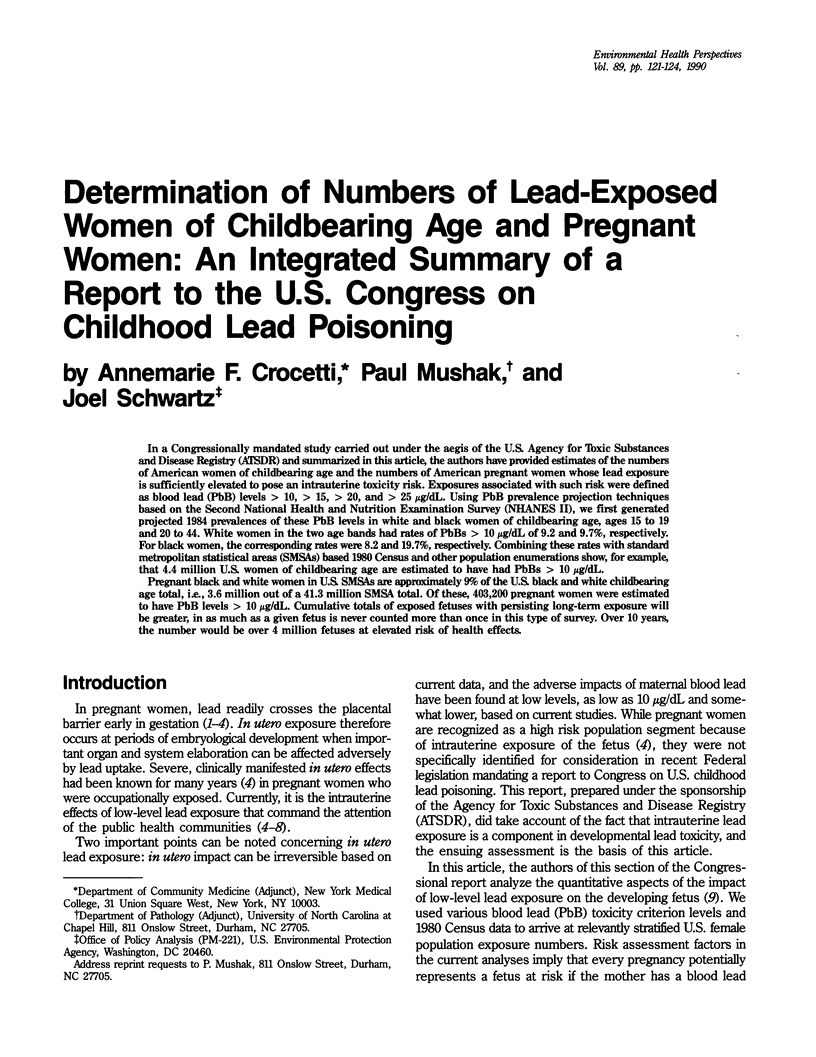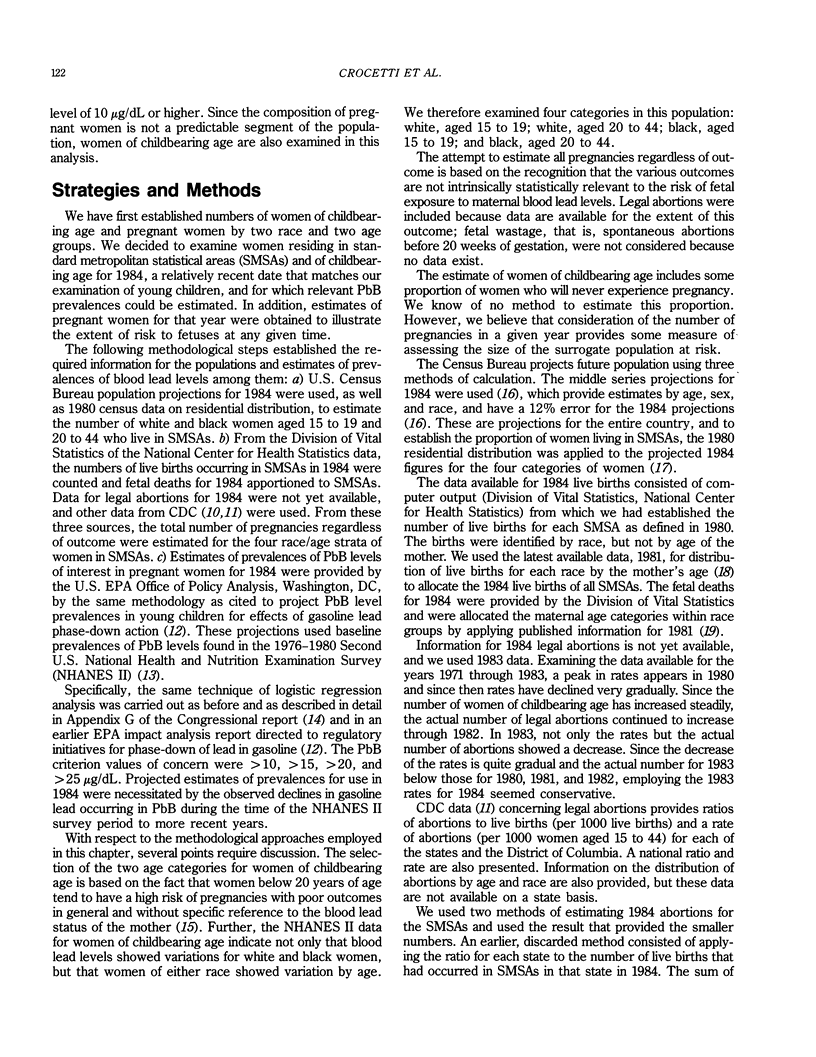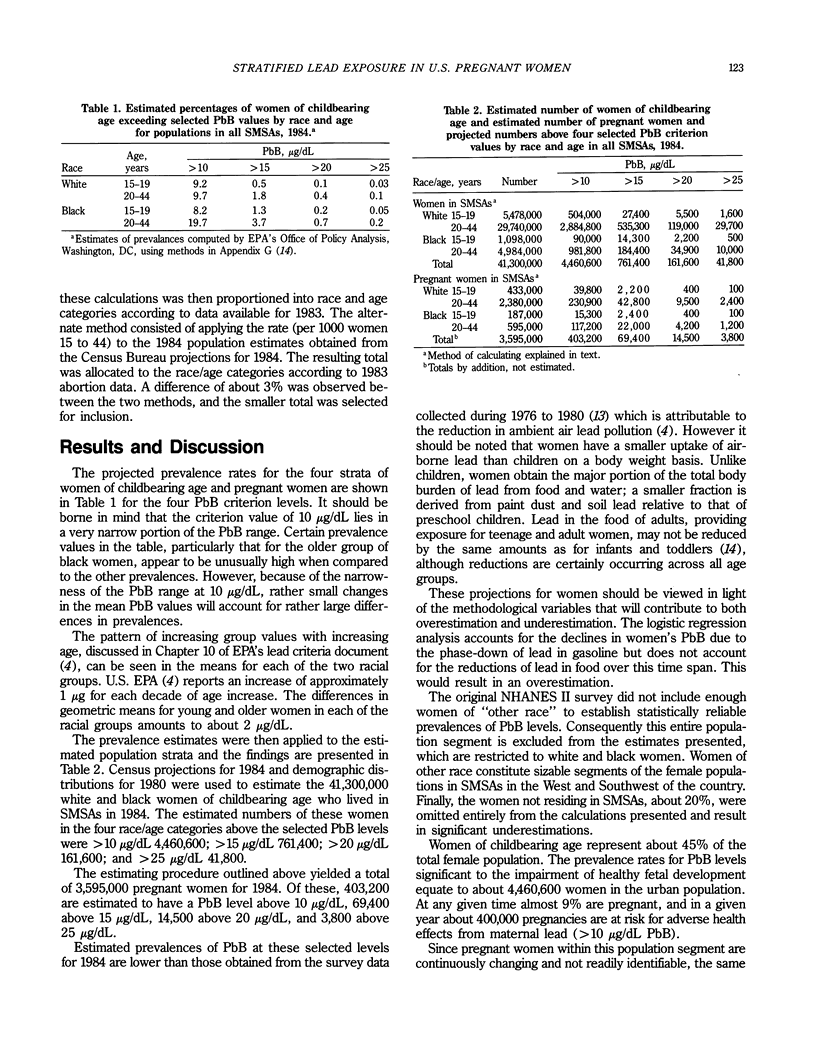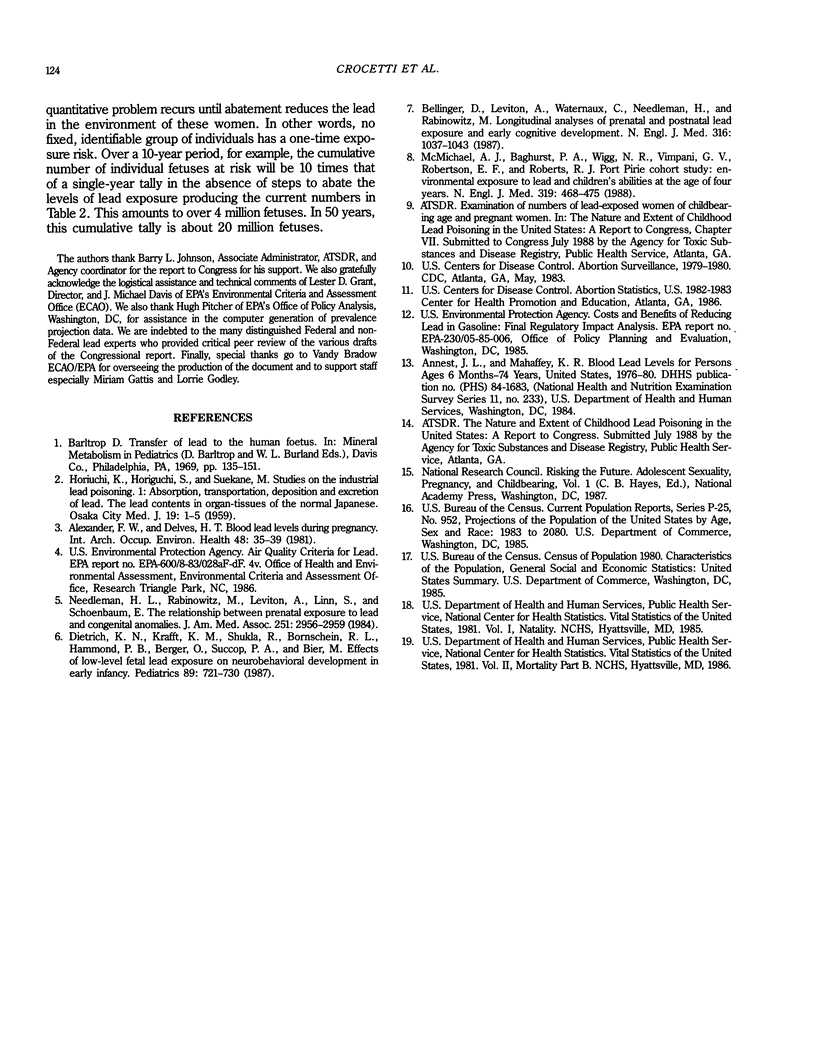Abstract
In a Congressionally mandated study carried out under the aegis of the U.S. Agency for Toxic Substances and Disease Registry (ATSDR) and summarized in this article, the authors have provided estimates of the numbers of American women of childbearing age and the numbers of American pregnant women whose lead exposure is sufficiently elevated to pose an intrauterine toxicity risk. Exposures associated with such risk were defined as blood lead (PbB) levels greater than 10, greater than 15, greater than 20, and greater than 25 micrograms/dL. Using PbB prevalence projection techniques based on the Second National Health and Nutrition Examination Survey (NHANES II), we first generated projected 1984 prevalences of these PbB levels in white and black women of childbearing age, ages 15 to 19 and 20 to 44. White women in the two age bands had rates of PbBs greater than 10 micrograms/dL of 9.2 and 9.7%, respectively. For black women, the corresponding rates were 8.2 and 19.7%, respectively. Combining these rates with standard metropolitan statistical areas (SMSAs) based 1980 Census and other population enumerations show, for example, that 4.4 million U.S. women of childbearing age are estimated to have had PbBs greater than 10 micrograms/dL. Pregnant black and white women in U.S. SMSAs are approximately 9% of the U.S. black and white childbearing age total, i.e. 3.6 million out of a 41.3 million SMSA total. Of these, 403,200 pregnant women were estimated to have PbB levels greater than 10 micrograms/dL.(ABSTRACT TRUNCATED AT 250 WORDS)
Full text
PDF



Selected References
These references are in PubMed. This may not be the complete list of references from this article.
- Alexander F. W., Delves H. T. Blood lead levels during pregnancy. Int Arch Occup Environ Health. 1981;48(1):35–39. doi: 10.1007/BF00405929. [DOI] [PubMed] [Google Scholar]
- Bellinger D., Leviton A., Waternaux C., Needleman H., Rabinowitz M. Longitudinal analyses of prenatal and postnatal lead exposure and early cognitive development. N Engl J Med. 1987 Apr 23;316(17):1037–1043. doi: 10.1056/NEJM198704233161701. [DOI] [PubMed] [Google Scholar]
- Dietrich K. N., Krafft K. M., Bornschein R. L., Hammond P. B., Berger O., Succop P. A., Bier M. Low-level fetal lead exposure effect on neurobehavioral development in early infancy. Pediatrics. 1987 Nov;80(5):721–730. [PubMed] [Google Scholar]
- McMichael A. J., Baghurst P. A., Wigg N. R., Vimpani G. V., Robertson E. F., Roberts R. J. Port Pirie Cohort Study: environmental exposure to lead and children's abilities at the age of four years. N Engl J Med. 1988 Aug 25;319(8):468–475. doi: 10.1056/NEJM198808253190803. [DOI] [PubMed] [Google Scholar]
- Needleman H. L., Rabinowitz M., Leviton A., Linn S., Schoenbaum S. The relationship between prenatal exposure to lead and congenital anomalies. JAMA. 1984 Jun 8;251(22):2956–2959. [PubMed] [Google Scholar]


